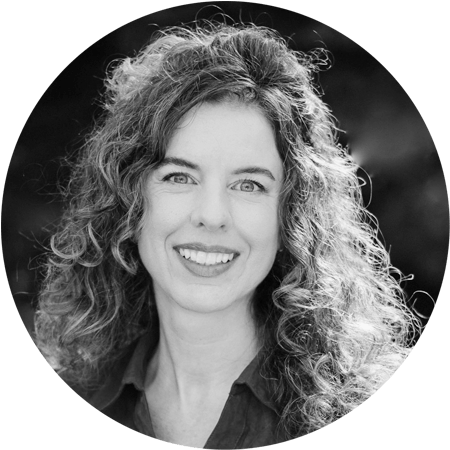The series “Pandemic” arose from conversations Los Angeles filmmaker-doctor Ryan McGarry had with people about the 100th anniversary of the Spanish flu of 1918, according to the Los Angeles Times.
McGarry is a doctor who works at Los Angeles County-USC Medical Center. He told the Los Angeles Times he wants people to recognize the incredible work that not only healthcare professionals but also support staff like custodial workers, are doing during the COVID-19 crisis, as they put their lives on the line.
“We started looking into the people around the world and in the United States, whose entire careers were based on trying to make sure that 1918 never happened again,” McGarry told the Los Angeles Times.
“Yet most of these people, they were having their budgets slashed or they were not being taken seriously,” he said. “And, well, here we are.”
The filmmaker, Ryan McGarry, followed pandemic experts, including vaccine researchers, doctors treating swine flu (H1N1), and professionals who prepare for medical institutions for pandemics.
“We started looking into the people around the world and in the United States, whose entire careers were based on trying to make sure that 1918 never happened again,” McGarry told the Los Angeles Times. “Yet most of these people, they were having their budgets slashed or they were not being taken seriously. And, well, here we are.”
McGarry is a doctor who works at Los Angeles County-University of Southern California Medical Center. He told the Los Angeles Times he wants people to recognize the incredible work that not only healthcare professionals, but also support staff like custodial workers, are doing during the COVID-19 crisis, as they put their lives on the line.
How Special Pathogens Spread Deadly Viruses
The World Health Organization (WHO) estimates that there are 1 billion annual seasonal flu cases worldwide. An estimated 650,000 cases result in death each year.
In the last 50 years, virtually all deadly influenza viruses have emerged from China. Dr. Caroll refers to population increase, which has resulted in an increased demand for animal protein worldwide, as a primary factor. Raising animals in confined spaces “elevates the risk for a virus to spread and mutate at a rapid rate,” he said.
The series explains how “special pathogens,” like avian influenza (bird flu), exist in wildlife, like ducks, then move to livestock like chickens, and finally to humans.
Dr. Syra Madad, who launched the Global Health Center in 2019 to partner with healthcare institutions worldwide to prepare for a pandemic, defines the characteristics of a special pathogen as:
1) causing high mortality rates
2) causing public panic
3) being hard to treat
4) being highly contagious
In the series, Dr. Ghazi Kayali tracks the special pathogen coronavirus, of which COVID-19 is a new strain, linked to bats throughout the Middle East. Various episodes show Kayali in Egypt, a hot spot where avian influenza returns every year, as well as in Lebanon.
He works to attempt to catch a virus before it mutates, in order to help break the transmission cycle from animals to humans.
Deb Carter, a field veterinarian in the Southeastern United States, tests wild ducks to identify subtypes of influenza. Because ducks migrate from Saskatchewan, Canada, to Argentina every year, they’re very capable of spreading illnesses far and wide.
In another part of the world, Dr. Michel Yao works with the Ebola outbreak. West Africa had its worst Ebola outbreak from 2014-2016, with 30,000 to 50,000 cases.
Health professionals in Goma, Democratic Republic of the Congo, must be meticulous when working with special pathogens. If they miss one case, it can trigger six more, then multiply, creating a very high risk of spreading to other countries, Dr. Yao said.
“A flu pandemic would likely kill hundreds of millions of people,” Dr. Dinesh Vijay, a pulmonologist in India who has been treating patients suffering from swine flu, said in the series. “Most countries remain underprepared and underinvested in measures to deal with this threat.”
Foreshadowing the Current Crisis
In 2019, when the series was filmed, Dr. Madad is seen conducting drills to help health professionals prepare for pandemics. In the series, she warns of the dire consequences of failing to recognize a pandemic as a global crisis.
“We’re all in it together, and the greater our complacency, the greater the crisis will be,” Dr. Madad said.
According to Dr. Madad, an estimated 3,000 commercial flights pass through New York City daily. If one person comes through the city with a special pathogen, it can spread throughout the U.S. in a month and throughout the world in two months.
With New York City as an epicenter of the COVID-19 outbreak only a few weeks ago, Dr. Madad’s words have become prophetic.
Finally, Dr. Caroll wraps up the six-part docuseries with a warning about another deadly virus emerging — and the importance of being prepared.
“Influenza and respiratory viruses are the ones we’re concerned about in terms of being able to spread rapidly from one human to another and spread from country to country,” Dr. Carroll said.
“And when we’re talking about the wellbeing of seven-plus billion people, policymakers and planners and global health leaders, they should be thinking about this in serious terms. We have to be prepared. We have to be vigilant.”
You can watch “Pandemic” on Netflix.
